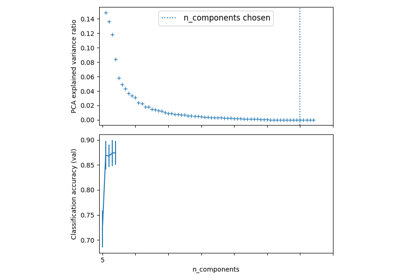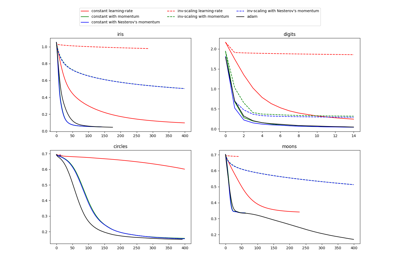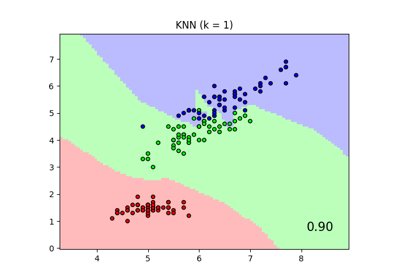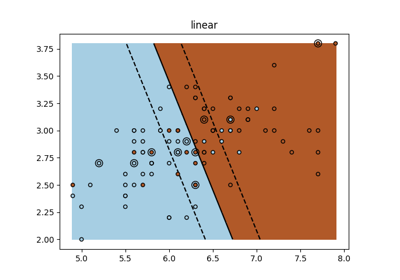Note
Go to the end to download the full example code or to run this example in your browser via JupyterLite or Binder
Digits Classification Exercise#
A tutorial exercise regarding the use of classification techniques on the Digits dataset.
This exercise is used in the Classification part of the Supervised learning: predicting an output variable from high-dimensional observations section of the A tutorial on statistical-learning for scientific data processing.
KNN score: 0.961111
LogisticRegression score: 0.933333
from sklearn import datasets, linear_model, neighbors
X_digits, y_digits = datasets.load_digits(return_X_y=True)
X_digits = X_digits / X_digits.max()
n_samples = len(X_digits)
X_train = X_digits[: int(0.9 * n_samples)]
y_train = y_digits[: int(0.9 * n_samples)]
X_test = X_digits[int(0.9 * n_samples) :]
y_test = y_digits[int(0.9 * n_samples) :]
knn = neighbors.KNeighborsClassifier()
logistic = linear_model.LogisticRegression(max_iter=1000)
print("KNN score: %f" % knn.fit(X_train, y_train).score(X_test, y_test))
print(
"LogisticRegression score: %f"
% logistic.fit(X_train, y_train).score(X_test, y_test)
)
Total running time of the script: (0 minutes 0.071 seconds)
Related examples

Pipelining: chaining a PCA and a logistic regression

Compare Stochastic learning strategies for MLPClassifier

Comparing Nearest Neighbors with and without Neighborhood Components Analysis

Restricted Boltzmann Machine features for digit classification

